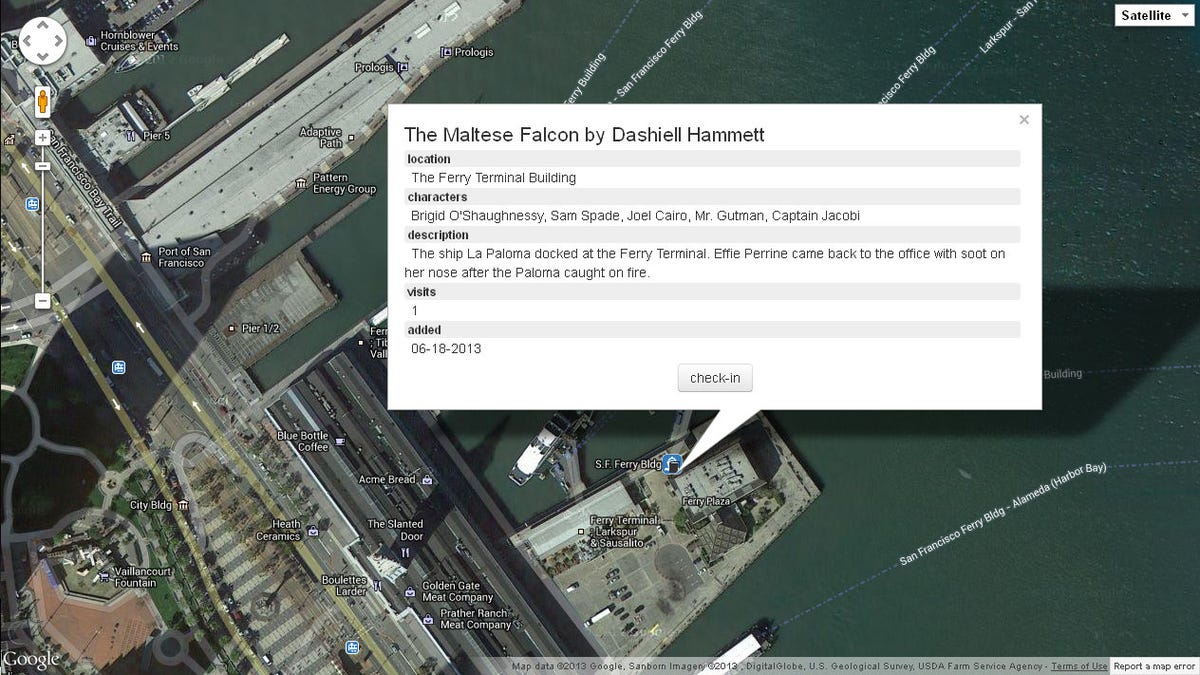Placing Literature maps book scenes in the real world
Go behind the scenes of a new site based in Google Maps that combines geography, technology, and literature into a crowdsourced map of real locations from novels.

One of the first things I did when I visited London a few years ago was to go on a Sherlock Holmes walking tour. I'm not the only avid reader compelled to seek out the real-life settings found in books. This desire is what has brought about Placing Literature, an interactive site dedicated to plotting scenes from books onto real-world maps. It's like a heady mixture of a database, Google Maps, and the efforts of a bunch of literature geeks.
Placing Literature started with a conversation between co-founders Andrew Bardin Williams (an author) and his sister-in-law Kathleen Colin Williams (a geographer). "I use a lot of real-world locations in my novels. We decided there was this great intersection between geography and literature that hadn't been explored before," says Andrew Bardin Williams.
The site has been in development over the past six months thanks to a $10,000 grant from the Arts Council of Greater New Haven. Software engineer and former Googler Steven Young came on board to apply his technical know-how to working with Google Maps and building up the technology side of the site.
Due to its base in Google Maps, the site feels very familiar. You can click on a map, zoom in and out, and pick out locations from a variety of novels. So far, novels like Dashiell Hammett's "The Maltese Falcon" and "The Long Shining Water" by Danielle Sosin have had locations logged into the database.
Crowdsourcing is key to the project. "The goal is to gather as much data as we possibly can, get people to share it, and get people to start exploring their neighborhoods and their communities," says Williams. "We're ready to turn it over to the community now and see what happens with it."
Eventually, users should be able to harness the site to put together trips, like a visit to the China sites mentioned in "The Joy Luck Club," or a regional tour of Laura Ingalls Wilder locations. The potential for use in education and academic research is also tremendous. It would have made that paper I wrote in high school on "Zen and the Art of Motorcycle Maintenance" a lot easier.
Placing Literature is currently developing partnerships with libraries and educators. "We see commercial possibilities as well. We have some ideas on how to generate revenue," says Williams. He does promise the site won't become home to distracting advertising that could dampen the user experience.
The next version of Placing Literature should feature quite a few upgrades as far as searching through the data goes. The team also plans to offer a way for users to upload photos of the locations. Those will be welcome upgrades for a site that is penning its own place in the realm of both literature and technology.

